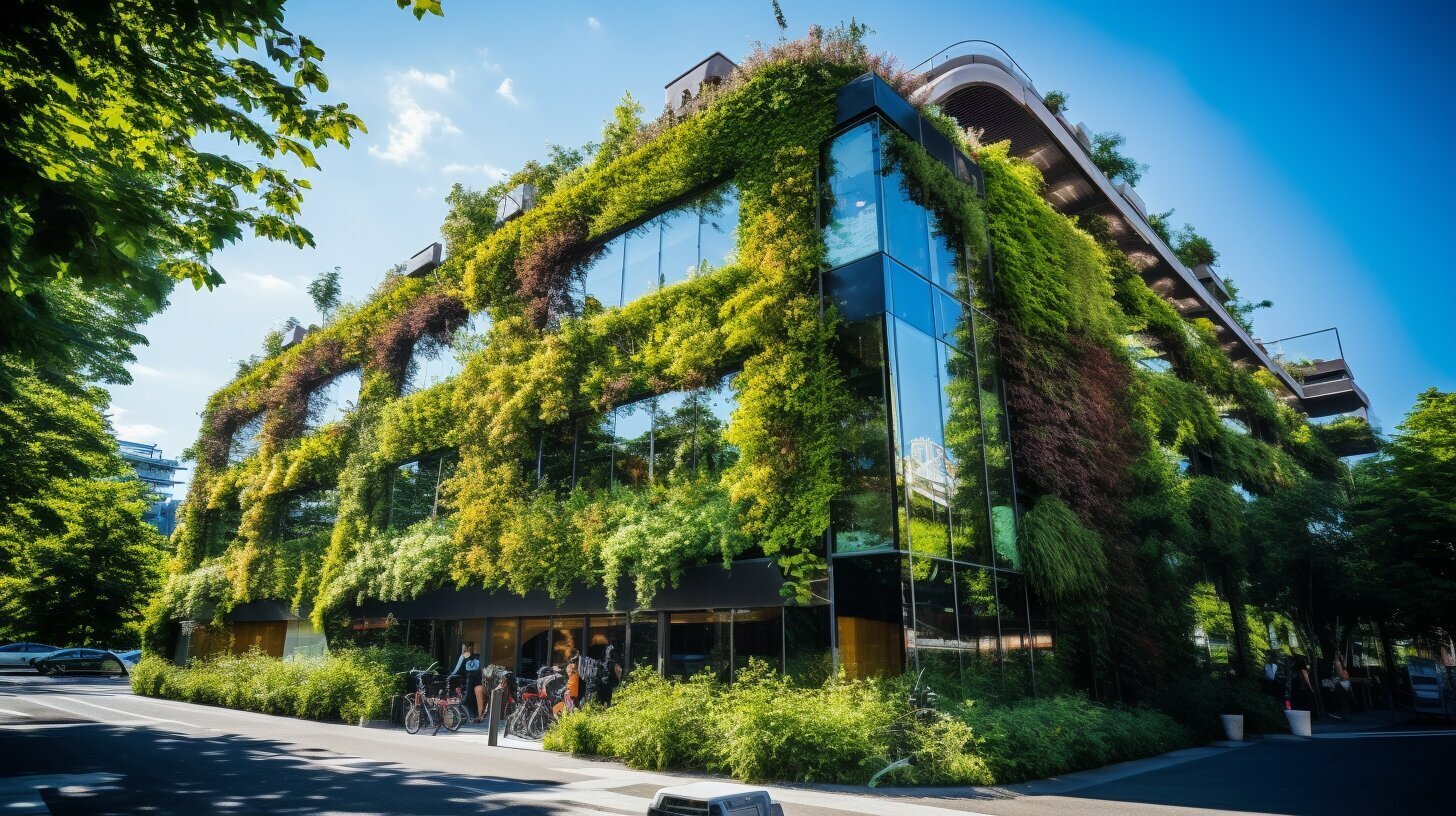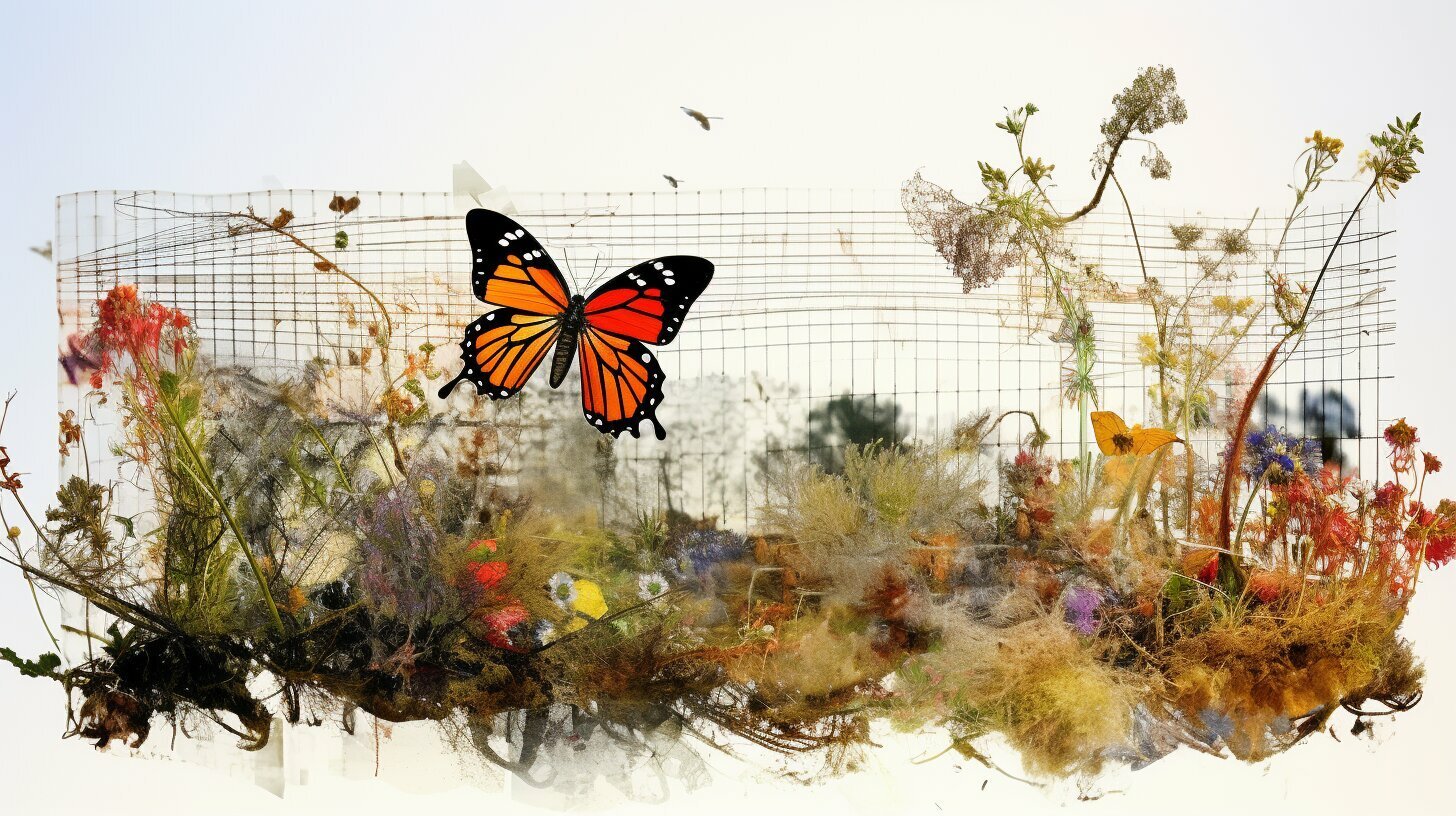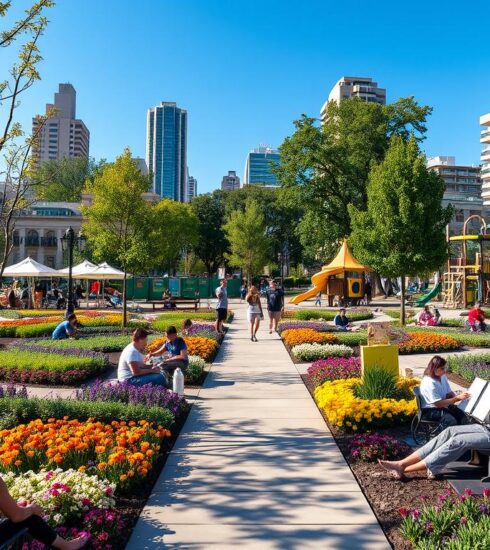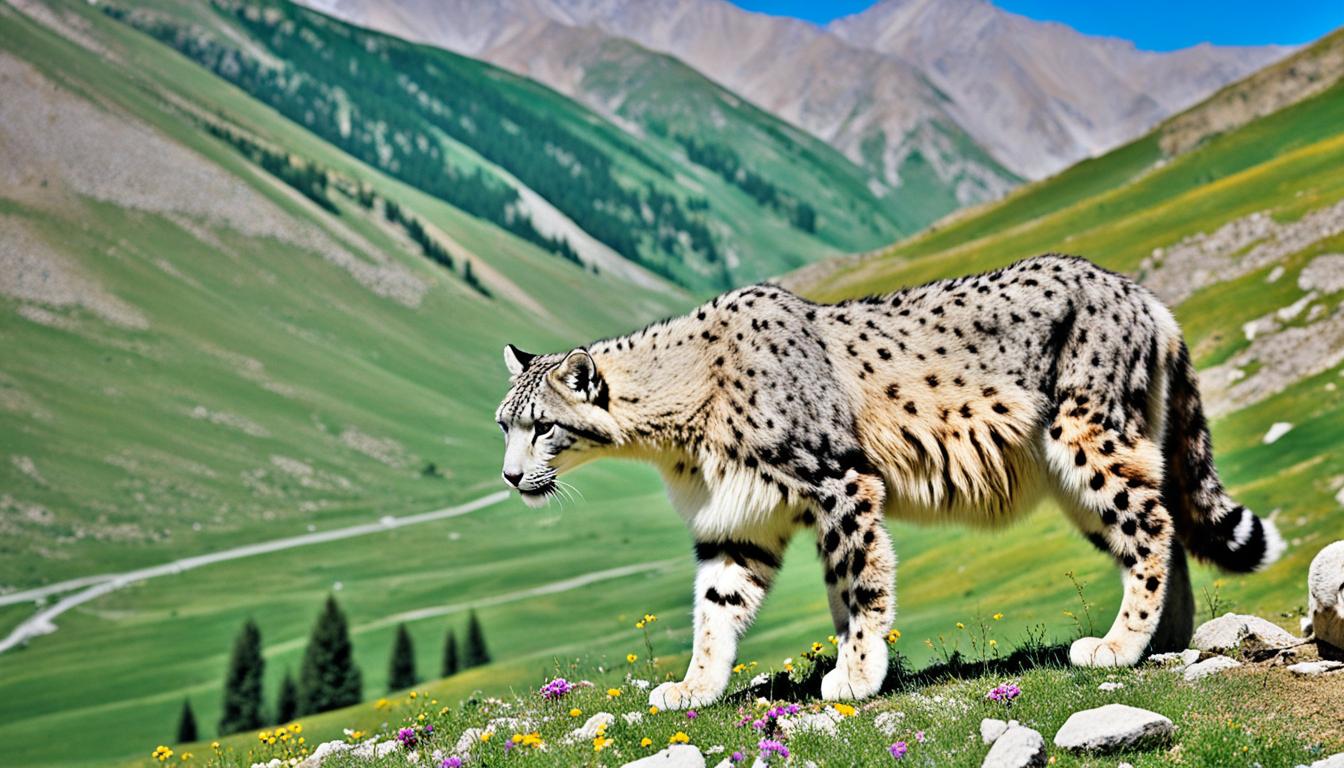10 Top Cities Leading For Biodiversity in the Built Environment
Welcome to our article on the top 10 cities in the world that are leading the way for biodiversity in the built environment. In today’s world, sustainable urban living has become a necessity, and these cities are making a profound difference in promoting urban biodiversity. In this article about the cities leading for biodiversity, we’ll take a closer look at each city’s initiatives that prioritise biodiversity and how their efforts are making a significant impact.
Here are the 10 Top Cities Leading For Biodiversity in the Built Environment
London, United Kingdom
London is one of the top cities leading the way for biodiversity in the built environment. The city has made significant efforts to promote sustainable urban living, including initiatives for biodiversity conservation.
One of London’s key strategies for enhancing urban biodiversity is through nature-friendly infrastructure. For instance, the city has installed bird boxes, bat boxes, and insect hotels in urban areas to create habitats for wildlife.
Another notable initiative is the incorporation of biodiversity into urban planning. London has set a target to increase green cover in the city by 5% by 2030, and this involves planting more trees and creating more green spaces.
Furthermore, London has taken steps to raise awareness and engage the public in biodiversity conservation. The city runs various campaigns and events to encourage citizens to take action to protect urban wildlife and habitats.
London’s commitment to promoting biodiversity in the built environment is an excellent example of sustainable urban living. By creating nature-friendly infrastructure and incorporating biodiversity into urban planning, the city is making a significant difference.

“London has made significant efforts to promote sustainable urban living, including initiatives for biodiversity conservation.”
Singapore, Singapore
Singapore is one of the top cities leading the way for biodiversity in the built environment. The city-state is known for its dedication to greenery and sustainability, and its efforts to promote urban biodiversity are no exception.
One of Singapore’s main initiatives for promoting biodiversity is through the creation of green spaces. The city has incorporated greenery into its urban landscape through numerous projects, including rooftop gardens and vertical forests. Singapore’s Gardens by the Bay, which features a network of giant tree-like structures covered in lush vegetation, is a prime example of the city’s commitment to urban biodiversity.

Singapore has also introduced biodiversity-friendly infrastructure into its urban planning. The city has designed eco-friendly buildings and incorporated green roofs and walls to help regulate the temperature and improve air quality. These efforts have not only enhanced urban biodiversity but also improved the overall quality of life for Singapore’s residents.
Through its dedication to greenery and biodiversity, Singapore has become a model for sustainable urban living and a leader in promoting urban biodiversity. The city’s initiatives have set a precedent for other cities around the world to follow, and highlight the importance of protecting and enhancing biodiversity in the built environment.
Curitiba, Brazil
Curitiba is a city committed to sustainable urban planning, and it has prioritized biodiversity preservation in its initiatives. The city has received international recognition for its efforts in creating protected areas and urban forest management.
One of Curitiba’s most notable initiatives is the Ecological Corridor, which connects various green spaces throughout the city’s urban area. The corridor allows for the movement of wildlife and provides habitats for numerous species. Additionally, the city has implemented an urban forest management plan to protect and enhance the city’s green spaces.
Curitiba has also incorporated biodiversity preservation into its urban planning practices. The city has established regulations for new developments that require the inclusion of green space and vegetation. Such regulations also promote sustainable development practices, preventing the destruction of natural habitats and biodiversity hotspots.
| Pros | Cons |
|---|---|
| Strong commitment to biodiversity preservation | Development regulations may be viewed as overly restrictive by some |
| Efforts to create and connect green spaces throughout the city | Implementation of biodiversity-friendly practices may be challenging for older developments |
| Urban forest management plan to protect green spaces |
Curitiba’s efforts to prioritize biodiversity preservation and incorporate it into urban planning practices serves as a model for other cities looking to enhance their urban biodiversity. By balancing development with conservation, Curitiba has created a city that is both sustainable and wildlife-friendly.

San Francisco, United States
San Francisco is a leader in biodiversity conservation efforts in the urban environment. The city’s commitment to protecting and restoring habitats for urban wildlife is evident through its numerous initiatives.
One of the major projects in San Francisco is the Natural Areas Program, which aims to preserve and enhance the city’s natural areas by removing invasive species, restoring native habitats, and improving access for visitors. The program manages over 1,000 acres of natural areas in the city and helps to protect endangered and threatened species.

The city also has a strong focus on urban forestry, with over 700,000 trees planted throughout the city. These trees provide habitat for birds, insects, and other wildlife while also helping to improve air quality and reduce the urban heat island effect.
San Francisco is also home to the Wildlife Conservation Society’s Urban Biodiversity Program, which works to promote urban biodiversity through research, education, and community engagement. The program has partnered with the city and local organizations to create habitat for endangered species such as the San Francisco garter snake and the California red-legged frog.
With its commitment to biodiversity conservation, San Francisco is a shining example for other cities looking to create a more sustainable and wildlife-friendly urban environment.
Melbourne, Australia
As one of the world’s most livable cities, Melbourne has also become a leader in promoting biodiversity in the built environment. The city has developed a range of urban biodiversity strategies and green infrastructure projects aimed at increasing the number and diversity of species that call Melbourne home.
One of Melbourne’s most significant initiatives is the creation of wildlife corridors. These are linear tracts of vegetation that allow animals to move between patches of habitat, reducing the isolation of wildlife populations and increasing their genetic diversity. Melbourne’s wildlife corridors provide habitat and connectivity for a range of species, including birds, butterflies, and small mammals.
The city has also implemented a range of programs to promote biodiversity on public and private land. These include the Greening Our City program, which encourages residents to plant indigenous species in their gardens, and the Growing Green Guide for Melbourne, which provides guidance on sustainable design and green infrastructure in new developments.

Melbourne’s commitment to promoting biodiversity in the built environment has been recognized internationally. In 2018, the city was awarded the UNESCO City of Literature title, which recognized its efforts to create a sustainable and liveable city.
The Royal Botanic Gardens, Melbourne
The Royal Botanic Gardens in Melbourne is one of the city’s most significant green spaces, covering 38 hectares in the heart of the city. The gardens are home to over 8,500 plant species from around the world, as well as a range of wildlife.
The gardens have a range of programs aimed at promoting biodiversity, including the Growing Friends program, which involves volunteers in the propagation and cultivation of indigenous plants, and the Environmental Internship program, which provides students with the opportunity to work on conservation and research projects in the gardens.
“Our aim is to create a garden that is not only a beautiful space for the people of Melbourne but also a refuge for wildlife and a showcase for sustainable design,” says Tim Entwisle, Director of the Royal Botanic Gardens Melbourne.
The gardens also host a range of events throughout the year aimed at promoting biodiversity and sustainable living, including workshops on composting and sustainable gardening, and talks on urban ecology and the importance of biodiversity in the city.
Berlin, Germany
Berlin is a city that has made great strides in urban nature conservation and promoting ecological connectivity. With over 2,500 parks and green spaces, the city provides ample opportunities for biodiversity to thrive.
One of Berlin’s key initiatives for enhancing biodiversity is through protected areas. The city has designated over 75,000 acres of green space as protected, ensuring that these areas remain habitats for both flora and fauna.
Berlin also focuses on creating green corridors to connect these protected areas, which helps to support ecological connectivity. This initiative involves creating pathways for wildlife to move and migrate between habitats, thereby promoting genetic diversity and healthy ecosystems.
Berlin’s Green Infrastructure Plan
Berlin’s Green Infrastructure Plan is another significant initiative for promoting biodiversity in the city. The plan focuses on integrating green spaces and biodiversity into urban planning and development to create a sustainable and livable city.
The plan includes the creation of green roofs, which are roofs covered in vegetation, to help reduce the urban heat island effect and provide habitat for wildlife. Berlin is also implementing sustainable drainage systems, which help to reduce water pollution and provide additional habitat for aquatic species.
Overall, Berlin’s commitment to urban nature conservation and biodiversity is setting an excellent example for other cities to follow. By preserving and protecting green spaces, creating ecological connectivity, and promoting green infrastructure, the city is creating a sustainable and livaeble environment for both humans and wildlife.
Auckland, New Zealand
Auckland is a vibrant and bustling city that is dedicated to promoting urban ecology and conservation of native species. The city recognizes that preserving biodiversity is crucial to maintain the health and resilience of urban ecosystems.
Auckland’s initiatives to protect and restore natural habitats within the city have been critical to maintaining a healthy environment. The city has established several protected areas, including regional parks and conservation areas, to safeguard native flora and fauna. The Tawharanui Open Sanctuary, for instance, which is home to rare bird species such as the takahe and brown teal, has been a significant success story.
Auckland also has several green spaces, such as the Auckland Domain and Cornwall Park, that promote urban biodiversity. These spaces have been enhanced through the planting of native trees and shrubs, which provide vital habitat for urban wildlife. The city has also implemented policies that encourage the planting of native vegetation in private gardens and public spaces to support urban biodiversity.
The city has been committed to promoting awareness of the benefits of urban biodiversity. It has several educational programs, including nature walks and bird-watching tours, that help raise awareness of the importance of conservation and the role of native species in urban ecosystems. Auckland has also collaborated with local schools to provide environmental education programs, which inspire children to become active stewards of their environment.
Auckland’s efforts in promoting urban biodiversity have garnered praise from both local and international organizations. The city’s dedication to conservation and sustainability has placed it as one of the top leaders for biodiversity in the built environment.
Copenhagen, Denmark
Copenhagen is known for being one of the most sustainable cities in the world, and their commitment to biodiversity-friendly design is no exception. As a result, the city has become a hub for sustainable urban living and has attracted many tourists who are interested in ecological architecture and design.
One of Copenhagen’s initiatives that promote biodiversity is their use of green roofs. Green roofs are roofs that are covered with vegetation, which provides habitats for wildlife and helps to reduce the urban heat island effect. In Copenhagen, green roofs are increasingly becoming popular, and the city has set a goal to cover 20% of all roofs with vegetation by 2025.
Copenhagen is also known for its sustainable drainage systems. These systems mimic nature’s way of managing rainwater by collecting it and allowing it to slowly seep into the ground, which reduces the risk of flooding in the city. Additionally, these systems provide habitats for various amphibians and birds.
The city is also focusing on creating habitats for pollinators such as bees and butterflies. They have created flower-rich areas in parks and on green roofs, which provides a food source for these important pollinators. Copenhagen’s efforts to promote biodiversity-friendly design have not gone unnoticed, and the city was awarded the European Green Capital award in 2014.
Image source: https://www.sciencedirect.com/science/article/pii/S2210670717300058
Cities Leading For Biodiversity Frequently Asked Questions
If you’re new to the topic of biodiversity in cities, you may have some questions. Here are some of the most frequently asked questions about urban biodiversity.
You may also find How To Deliver Urban Nature Based Solutions useful.
What is urban biodiversity?
Urban biodiversity refers to the variety of plant, animal, and microbial life that can be found in cities. It includes both native and non-native species and encompasses everything from insects and birds to trees and fungi.
Why is urban biodiversity important?
Urban biodiversity provides a range of benefits, including improved air quality, reduced noise pollution, and better mental health. It also plays a vital role in pollination, pest control, and nutrient cycling. In addition, urban biodiversity helps to support ecosystems beyond the boundaries of the city, connecting urban and rural areas and contributing to regional biodiversity.
How can I promote biodiversity in my own city?
There are many ways to promote biodiversity in your own city, including planting native species, creating green spaces, and reducing your use of pesticides and fertilizers. You can also support local conservation groups and advocate for policies that protect wildlife and their habitats.
What are some challenges to urban biodiversity?
Urbanization, climate change, and pollution are all major challenges to urban biodiversity. As cities grow and develop, they can fragment and destroy habitats, making it difficult for species to survive. Climate change can also disrupt the timing of seasonal events, such as migration and flowering, which can have knock-on effects throughout ecosystems. Finally, pollution from sources such as traffic and industry can harm both plant and animal life.
What are some examples of urban biodiversity initiatives?
Examples of urban biodiversity initiatives include creating green roofs and walls, building wildlife crossings, and restoring degraded habitats. Cities can also incorporate biodiversity into urban planning and design, such as by creating nature reserves and protected areas. Additionally, promoting sustainable transport and reducing energy use can help to reduce the impact of cities on wildlife.
By promoting urban biodiversity, cities can become more sustainable, resilient, and vibrant places to live.
Discover what types of architecture increase biodiversity.









Why Biodiversity Is Good For Business In The Built Environment
2 years ago[…] 10 Top Cities Leading For Biodiversity in the Built Environment […]